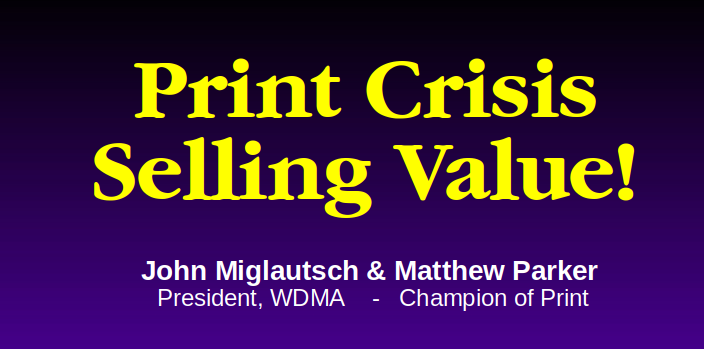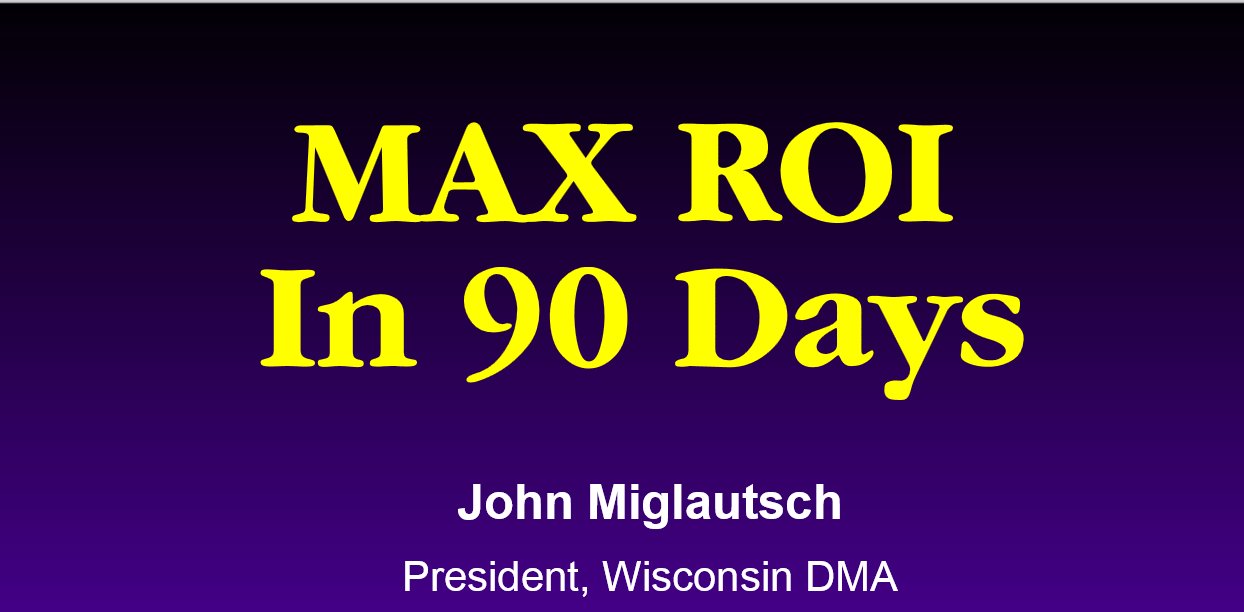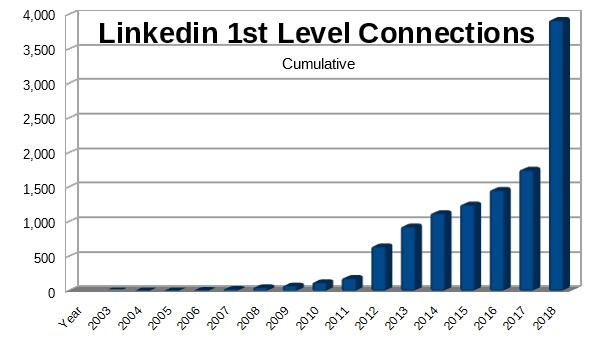TXT Fatigue – Fishburne, Netflix Share, Focus on the Top 20% – RFM
Start With Strategy, Li Impressions, B2B vs B2C, 20 Personalize Tips
Cooler Doors to Digital Ads, Keep Donation Letters Simple
Specsavers CN, DeJoy ‘Dramatic Change’, National Postal Forum Highlights
Fishburne-Media Context, Fou-Retargeting, Strong DM Basics
nemoa Boston Meetup
Encore Boston Harbor
nightshiftbrewing.com
Tag-Team, Game Amazon, Touch & Old School MAIL
Print Crisis: Selling Value with Matthew Parker
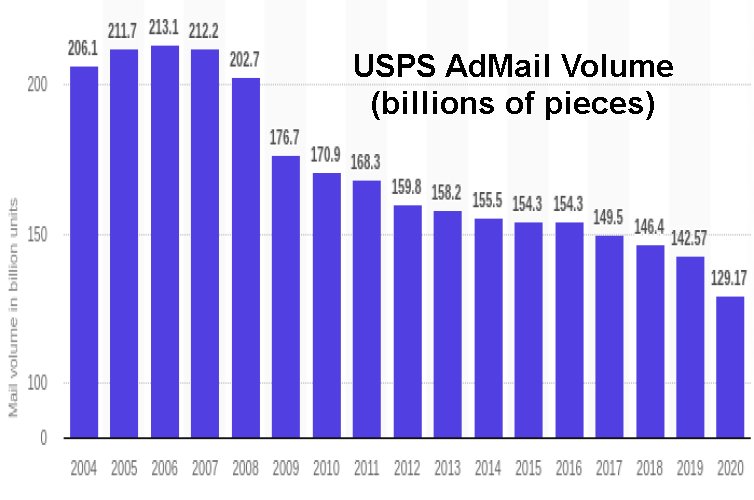 Printing AND Mail are on the Decline…
Printing AND Mail are on the Decline…
The average “growth” of the printing industry is -3.9% between 2015-2020.* Along with that, direct mail has dropped by 40% since 2007. If we don’t change, we risk becoming obsolete.
Stop selling on PRICE alone. Discover the Value your customers are looking for. MAIL is accountable, testable and verifiable – and drives increased Print volumes.
Special offer to help you and your sales/marketing team get started.
To find out more about WDMA benefits and membership
Kevin for Xmas – Aldi, Ad Fraud 90% Solution, Throw out Your Marketing Plans!
DieHard, Retail JUMP, Amazon $10B, Pricing Models
Emily in Paris, Borrowed Innovation, Direct Mail 2.0, Burger King CMO
Mail seems like its out of date, but borrowing from other industries and fields often opens up breakthrough innovation
Send ‘Noods’, 1-3rd Ditch, Don’t Blame CFO – Use MAIL! – Ritson
Rebound ROI – 90 Days Results!
What Keeps Your CEO AWAKE at Night?
Has growth slowed? Competitive pressures eroded profits? Can Marketing Machine Learning increase profit and growth. Marketers hope so, but 85% of AI projects fail to deliver ROI.
Predictive Modeling case studies, breakthroughs and head-to-head tests. Finally, we’ll talk about a risk-free way you can guarantee AI ROI in 90 DAYS!
This may be the most important webinar you can attend in the next year. Looking forward to seeing you there. Thurs, June 23rd Noon Chicago Time.
WDMA Comes to MN – WHY MAIL! The missing link in OmniChannel Marketing
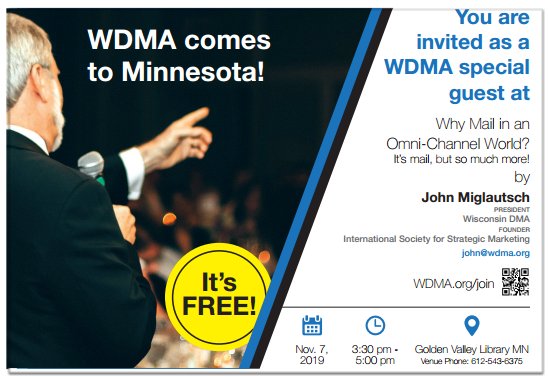 John will be presenting why mail is the most powerful marketing weapon no one is using. Mail is superior in engagement, attribution and for Artificial Intelligence.
John will be presenting why mail is the most powerful marketing weapon no one is using. Mail is superior in engagement, attribution and for Artificial Intelligence.
Digital Advertising has been with us only about a decade, but everyone agrees, it is the only reasonable way to acquire customers, build brands and influence the marketplace. John makes the case that Direct Marketing methods are a far more proven and effective foundation and will also enhance digital effectiveness. An up-to-the-minute case study illustrates the explosion that can happen with mail as a key.
Printing, Postage & Light refreshments provided by Japs-Olson Company (WDMA Corporate Member)

Promotion graphic design provided by Grant Johnson, President, Responsory (WDMA Member):
AI ROI in 90 Days Guaranteed – Why 85% of AI Projects FAIL and what to do about it
Grow Your Linkedin Connections – John Miglautsch
It’s not how many social networks, its how good is YOUR social network
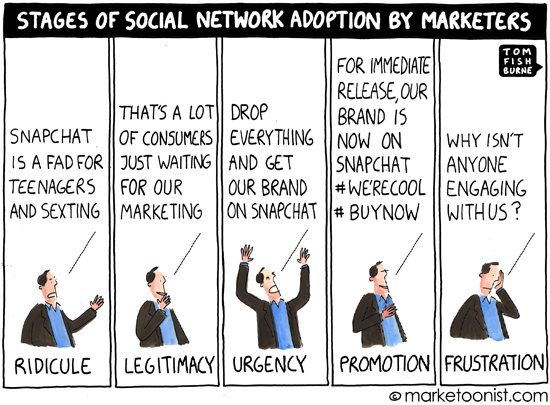
I started on Linkedin in 2003 – believe it or not. After 5 years I had 49 connections which is about average. In the beginning, no one I knew had heard of it, so it didn’t really pay to search for friends there… I kept my contacts in my computer, printing them out in a tiny font and carrying my book with me. In 2012, I got serious about Social Media. I curated on twitter, did videos on youtube, and took a linkedin course (3 actually).
One of the videos generated a client who did $150K with me the next year, so I suppose it was all worth it.
One of the things I learned in those classes is that I could download the names and emails of my 1st level connections – did you know that? Even though I got many encouraging replies and boosted the views of my videos and articles, there were always a few unsubscribes. I was growing new connections at a such a slow pace, my useable list seemed to be shrinking.
I spent countless hours trying all the tricks of generating a bigger list. Promotional offers – get this article free, just give me your email. More webinars, live-streams, articles and even live speeches. Weeks converting my websites to wordpress and building ‘attractive’ popups (don’t you hate those). For all that, not sure I got more than a couple hundred new connections. Are you feeling that same frustration??
Last fall, I decided, with 1,500 connections after 15 years on linkedin, to give it another – intentional shot. With far less effort than above, I’m now pushing 4,000. It worked so well, I decided to build a little class and share how I did it. I’ve worked with friends who weren’t even on linkedin, one is a local attorney another a VP at a publicly traded software services company. I’m convinced it will work for just about anyone. Join me for my next live webinar where I explain how to get started growing your linkedin network connections.
Making Direct Mail…Direct Again by Connie Vaughn
This week’s blog post is contributed by guest writer, Connie Vaughn, Director of  Data Science for NaviStone. Connie has worked in data science and analytic marketing for over twenty years for a variety of agencies and client companies. Her favorite parts of data science are getting creative with data elements, using mathematics to simplify business problems, and creating data products that directly impact the business. She has degrees in math, psychology, business, and journalism, as well as a certificate in teaching English to speakers of other languages. She is getting ready to foster-to-adopt a teenager and hoping to give her first TEDx talk in the near future.
Data Science for NaviStone. Connie has worked in data science and analytic marketing for over twenty years for a variety of agencies and client companies. Her favorite parts of data science are getting creative with data elements, using mathematics to simplify business problems, and creating data products that directly impact the business. She has degrees in math, psychology, business, and journalism, as well as a certificate in teaching English to speakers of other languages. She is getting ready to foster-to-adopt a teenager and hoping to give her first TEDx talk in the near future.
Making Direct Mail…Direct Again
I’ve been around long enough to remember the pre-modeling days of retail, when we used “RFM” to score and rank customers—Recency, Frequency, Monetary. This was essentially a three-dimensional cube for sorting and segmenting customers, based solely on their past purchase behavior aggregated from retail order files. Predictive modeling and CRM systems came along and used more variables and maybe a few demographics, but it was still the same principle: “Past behavior is the best predictor of future behavior.” Or so we said to ourselves and our clients.
But is it always?
Customer models based on past purchases explained 1-3% of the subsequent purchase behavior. Human behavior is notoriously challenging to predict, and probably always will be—but these results were dismal. We used them, because anything better than chance still helped us make money. But the noise in our targeting was high—and our direct mail was often “junk mail” to the consumer.
We had even bigger problems with prospecting for new customers. We had no past purchase behavior for non- (or not-yet) customers. We relied on lists of names from magazines and data compilers, and in the best-case scenario, co-op data that included our competitors. It was common to have prospecting response rates less than 1%, and to take well over a year to recoup the costs to acquire a single new customer. And we generated a lot of junk mail in the process.
Then, the Internet happened. The retail world moved away from seemingly expensive mail, and into seemingly cheap email, digital display, search optimization, and retargeting.
Modeling didn’t immediately follow these new channels. Some channels, such as email, were cheap enough to blanket the market. There was little down side. I’ve personally done studies of opt outs, and even irritated customers delete emails far more than they unsubscribe.
In other cases, resellers developed simple to complex audience segmentations. Much retargeting was based on a single product view and couldn’t even tell whether you actually purchased the product or not. On the other extreme, Google and Facebook have become unwittingly notorious examples of some of the socially-charged characteristics an advertiser could select on complex, poorly-monitored platforms.
Meanwhile, customers learned to ignore online ads and emails, and returns on these “cheap” channels dropped precipitously.
Enter Web-powered Direct Mail: A solution that has been developed in which online browsing behavior can be linked—in a blind, privacy-compliant manner— to a customer’s name and mailing address. With mailboxes so much less cluttered nowadays, a simple offline mail piece to a website visitor stands out, and can nudge the customer to a return visit and a purchase. Suddenly the returns on investment from direct mail actually outperform their online advertising counterparts.
Several players in the marketplace offer this web-to-mail service. But a true differentiator to making it successful is applying data science techniques to visitors’ browsing behavior, by capturing every click and action of every visitor in a big data repository. With all this data, not only can a visitor be identified for direct mail—but advertisers can learn which visitors to mail profitably, and which to ignore.
Think about it. Browsing behavior isn’t someone’s past buying behavior—it’s a real-time indication of product interest and engagement. Browsing sends a live signal of intent to purchase. Patterns of browsing—such as repeat visits, types of products viewed, and time spent on site—distinguish true interest from “window shopping.” They tell us the story of a visitor’s location and timing on their path to purchase.
With the rich data from browsing combined with advanced pattern-recognition methodologies, advertisers can finally use data, technology, and modeling to make direct mail personal. Just like we used to say in CRM!
The new browsing behavior models explain 8-12% of a visitor’s subsequent purchase behavior. Humans are still more capricious than not, but the signal that allows us to accurately target has increased tenfold! It is as if, in the heyday of print catalogs, we had been able to sit on the customer’s shoulder and note which products they browsed and searched, and the page corners they folded down to return to.
Mailers can be more effective in generating profitable prospecting, housefile, and reactivation campaigns. Instead of relying on vague interest data or past purchases, they now know who is browsing their site and how serious they are, before they have (re-)identified themselves via a purchase or sign-up. Creative and product personalization are also possible.
So far there has been no indication that customers find the Web-powered mail to be intrusive or “creepy.” We’ve all become used to ads following us around the Web, and mail is considerably less intrusive than that.
Mail is also less likely to be ignored than an online ad or email. One of the surprising finds made recently is the long life that a postcard program has, once it’s in a customer’s hands. It was once assumed that the response window on this first-class mailer would be two to thirty days. But people hang onto the physical postcard for sixty days, ninety days, and even beyond. They sometimes hang onto them and respond even after an offer period has ended and they don’t get the special price! Thus, mail serves as a branding vehicle as much as a response vehicle.
Considered purchases with high average order values benefit from this approach, in particular. Website visitors to these sites are on a journey of information-gathering and decision-making. This includes eCommerce sites as well as sales lead generation for purchases transacted offline (e.g., automobiles, mortgages). Being touched by a mail piece that they can hang onto, perhaps at several points along their buying journey, generates some of the highest returns we have achieved.
Another recent finding is that Web-powered direct mail incites visitors to return to the branded Website to complete their purchase, rather than making an Amazon or eBay marketplace transaction for the same product. This benefits advertisers who do not have to pay the reseller, and reinforces the brand’s relationship with the customer. With Amazon accounting for upwards of 43% of all online sales, a direct branding and customer relationship vehicle becomes ever more important for retailers.
Personally speaking, right now is an exciting time to be a data scientist. The innovation in using browsing data to drive offline marketing fuses the benefits of current technology, data, and modeling. We are able to deliver twenty-first century branded, relevant, personalized, and high-response direct mail which is now anything but “junk.”
Theory & Practice in Marketing by John Miglautsch

40 years in Direct Marketing
Elon Musk tweeted “… humans are under rated.” Musk built a factory based on bigdata and AI and is reportedly now sleeping on the production floor to try to sort out the mess. Will you bet your company on the theory of artificial intelligence or instead work with proven marketing methods? John not only explains why AI is over rated, he also touches on 5 or 6 cases which illustrate the power of proven methods.
The Cost of Engagement – Omni-Channel Marketing by John Miglautsch
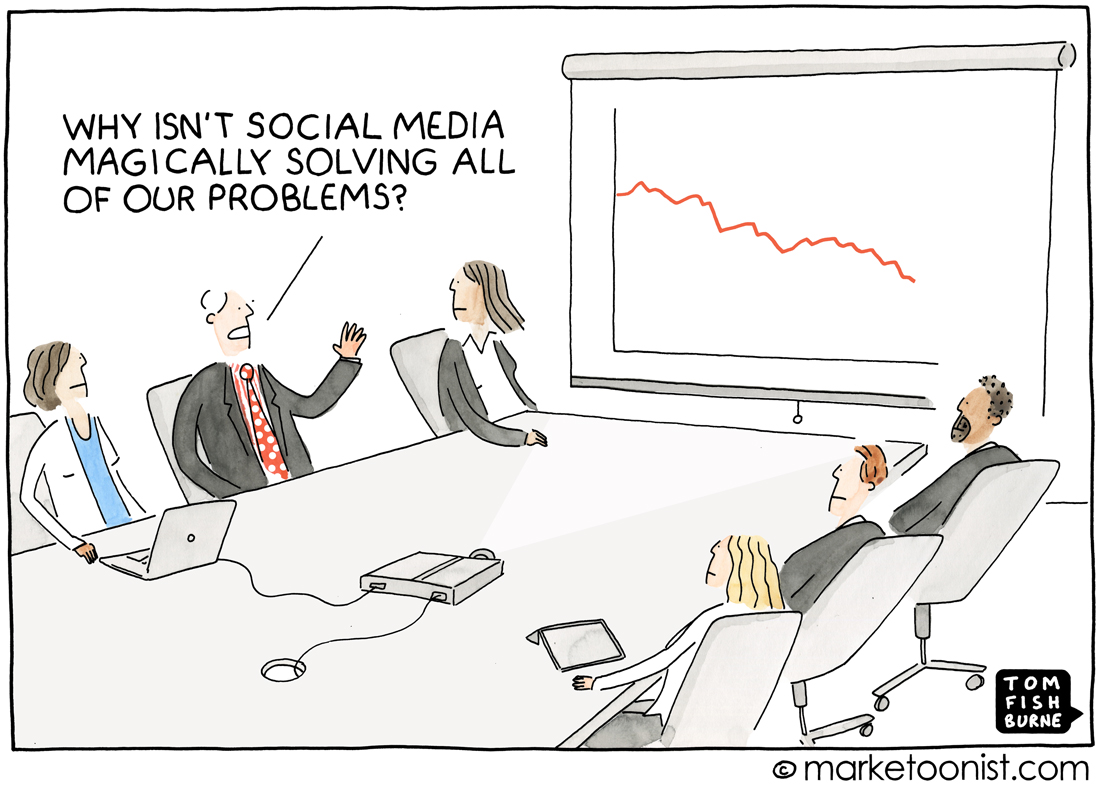
Social Media always seemed like free advertising… until about 2009. Now we may be paying millions because – well everyone is doing it. Discover a better value in something that time (and you) may have forgotten.
The FUTURE of MARKETING – 2018 by John Miglautsch
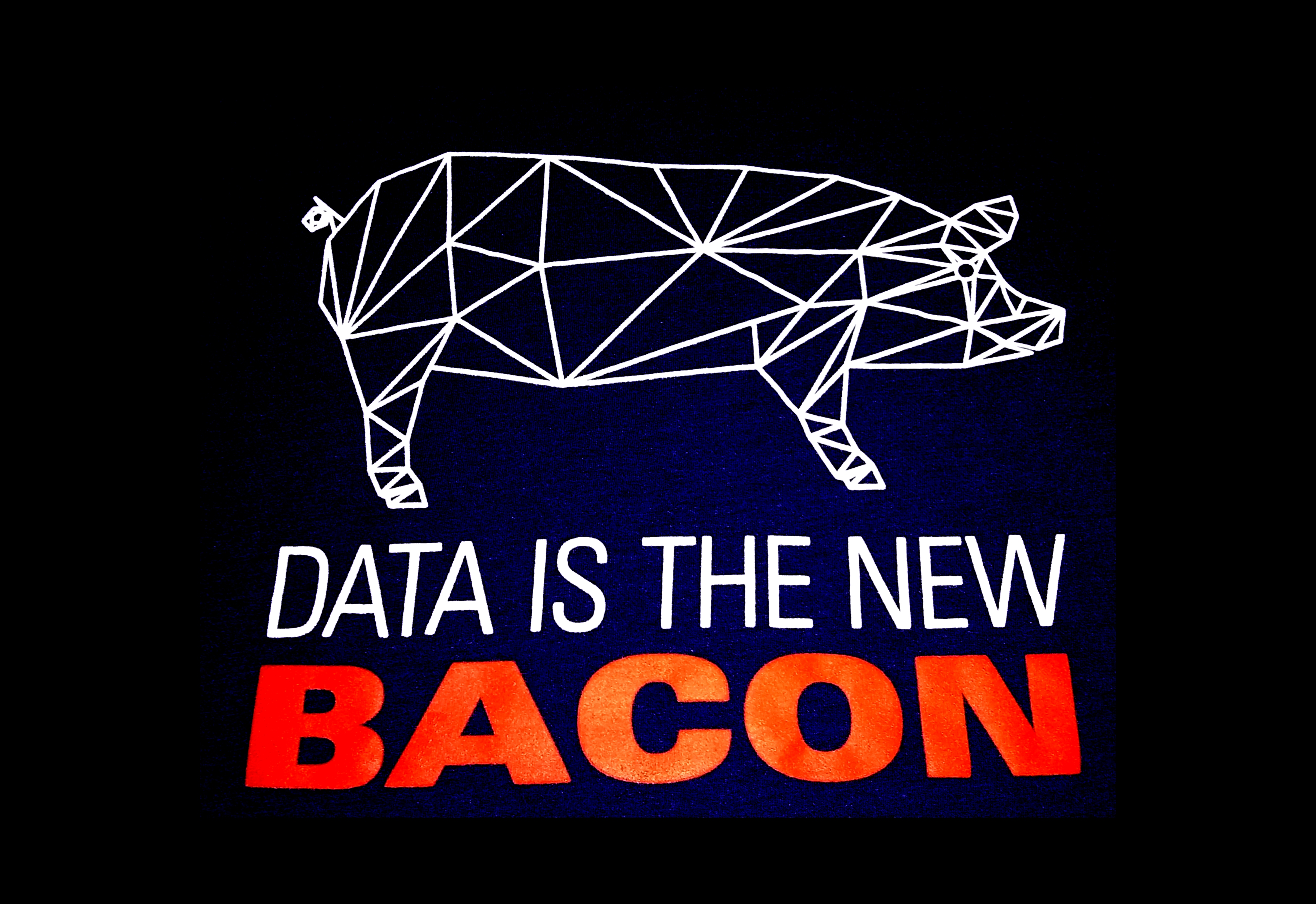 100% Guaranteed predictions – and several other opinionated guesses. Sure to entertain and amaze your friends. Give you more to talk about at the water cooler.
100% Guaranteed predictions – and several other opinionated guesses. Sure to entertain and amaze your friends. Give you more to talk about at the water cooler.
My friend at Forrester said, ” nicely put together, good insights, and easy to follow.”
“John. I just watched the video and made a lot of notes in between laughing out loud. You’re hitting the nail on the head. People get so wrapped up in gazing into the Big Data crystal ball that they forget the basics.” Tech Target magazine columnist.
Would love to hear your thoughts on it.
Millennials and Direct Mail: A Surprising Love Story – NaviStone
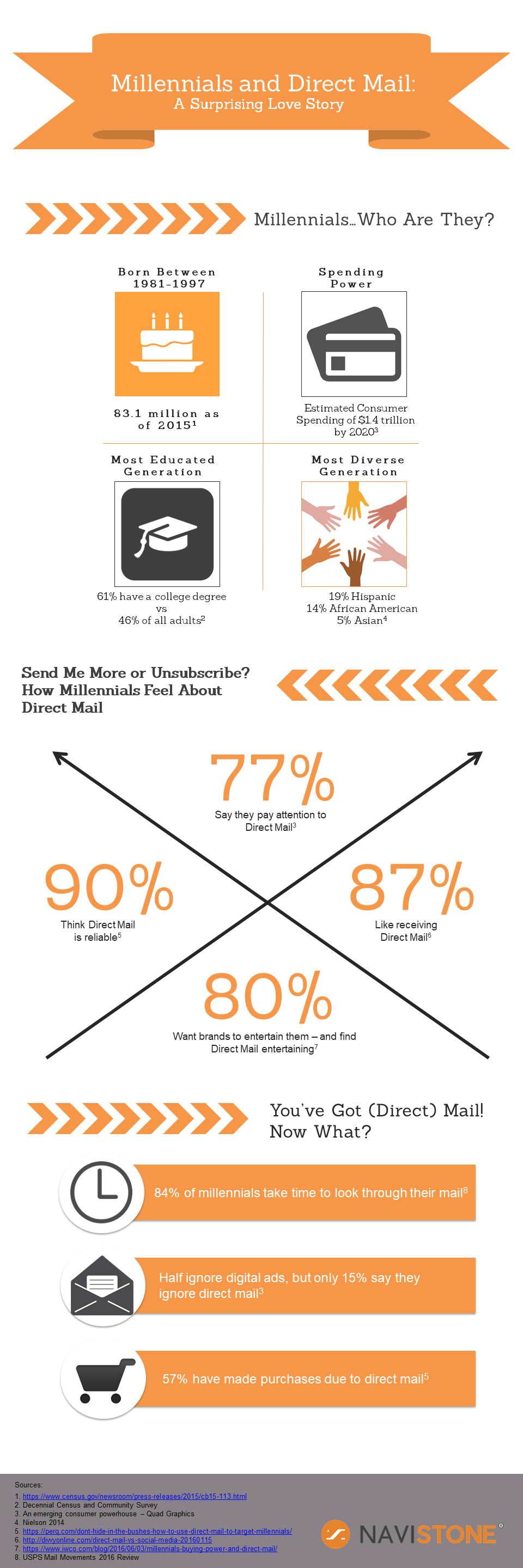
A/B Testing – You’re Doing It Wrong – Justin Baker
How to effectively A/B test in a way that drives long-lasting results

So, your company wants to increase revenue and adoption by making some marketing site tweaks. They want more conversions, more clicks, more shares, and more users. What do they tell you to do first? Well, A/B test! Compare two versions of a page, define a key goal (ex. clicks), and see if you get more clicks. But, does this actually work? Is it really the approach you should take? Let’s look at the data.
By nature, an A/B test is an experiment that assesses multiple (often 2) versions of a feature or page relative to a defined metric.
This article focuses on superficial A/B tests — the testing of cosmetic changes that distract teams from delivering meaningful customer value.
Continue reading “A/B Testing – You’re Doing It Wrong – Justin Baker”
Loss Prevention: The Hidden Benefit of Split Testing

Website optimization testing is becoming an increasingly common practice. It provides quantitative data that proves how making a change to your website will affect order conversion and revenue. I run a lot of tests across all my clients’ sites; my current average is around 400 a year. Collecting data from the past 3 years of testing, only 30% of those experiments were “wins” and positively affected revenue. If you flip that, then 70% of all tests run don’t provide a lift. That seems like a lot of wasted effort.
Continue reading “Loss Prevention: The Hidden Benefit of Split Testing”
Catalog Game Resurrected
In the Golden Age of Catalogs (80’s & 90’s) Catalog Age Mag commissioned Tracey Emerick and John Miglautsch to build the Catalog Management Institute. The most popular part of that curriculum lives again!
Direct Mail Out Performs Digital
According to the Direct Mail Association (DMA), response rates took quite the jump in 2016 with a 5.3% response rate to house lists and 2.9% to prospect lists. These are the highest levels the DMA has seen since 2003.
…due to the saturation of digital marketing in the age we are living in, direct mail response rates have flourished compared to their online counterparts. Continue reading “Direct Mail Out Performs Digital”
Webinar 4/4 (Recorded)
Introduction to the WDMA – Starts with the greatest case study for Direct Marketing EVER. Some discussion of what Direct Marketing means and why WDMA is your best source for Education, Conversation and Congregation.
Did Direct Marketing Swing the Election? by John Miglautsch
“President Barack Obama transformed modern day campaigning by elevating the importance and use of data. Since then campaigns have prioritized it. Hillary Clinton has been building her data operation since she launched her campaign, but Trump has largely dismissed its importance.” NBC News May 31 2016
“Analytics will win votes this year. Science, as it did in 2012, is playing an important role for mass voter persuasion in the U.S. presidential race. It’s a numbers game: Predictive analytics targets campaign activities, strengthening a campaign’s army of volunteers by driving its activities more optimally.” Scientific American Sep 15, 2016 Continue reading “Did Direct Marketing Swing the Election? by John Miglautsch”

